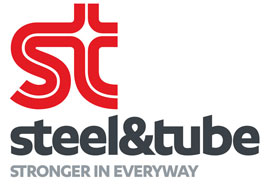Steel & Tube Holdings Ltd (NZE:STU), New Zealand’s biggest steel distributor, posted sales of $502 million for the year ending June 2015, with after-tax profits up by 20 percent to $21.4 million, the company said in a disclosure to the New Zealand Stock Exchange.
“It’s been a significant year for S&T,” CEO Dave Taylor told shareholders at the Company’s Annual Meeting. “We have focused our efforts on enhancing efficiency and strengthening our core business.”
S&T has recently opened three purpose-built facilities: two in Auckland (an area that presents around one-third of domestic steel demand) at Savill Drive and Highbrook, and one in Palmerston North. Their completion marks a key milestone in S&T’s extensive $30-million One Company reinvigoration programme, putting it at the forefront of New Zealand’s steel distribution and processing sector.
In August and September the Company announced the acquisition of MSL, distributors of Fortress Fasteners, and large bore polyethylene pipe companies, Aquaduct and Bosch.
Board Chairman Sir John Anderson said the acquisitions will take S&T into new and exciting territory as well as helping to off-set volatility in the commercial steel market, and a moderating New Zealand economy.
During his speech to investors, Mr Taylor warned that increasing low-priced steel exports and imported pre-fabricated steel was putting New Zealand’s steel industry under pressure, adding: “Finished steel prices are now at their lowest level for almost 13 years.
“Chinese exports have increased by 38% in the year ending September 2015 and will likely exceed 100 million tonnes this year. Putting this into perspective, New Zealand’s demand across all steel products is less than 1 million tonnes a year.”
Mr Taylor pointed out that many jurisdictions have introduced anti-dumping legislation to help protect their steel industries, increasing the focus on those countries where such actions are not being pursued, such as New Zealand. He cited the recent number of steel mill closures in the UK and the activities of BlueScope in Australasia as examples of the impact that low-priced exports is having on global steel manufacturing.
“What’s not appreciated is that these lower steel prices have a significant impact on distribution margins, too. With the decrease in steel prices over the past three years, New Zealand’s entire steel distribution profitability is estimated to have reduced by $45 million compared to three years ago.”
The issue, he said, had accelerated in the past 12 months, impacting the second half of the 2015 fiscal year.
Looking towards this full-year’s results, the profit impact will be off-set by the acquisitions. Notwithstanding this, continuing global steel dynamics mean the first half results are likely to be lower than December 2014. – BusinessNewsAsia.com
